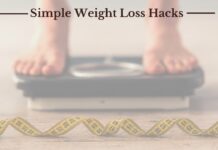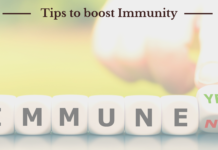Good eye health turns with the nutrition on your plate. Nutrients like omega-3 fatty acids, lutein, zinc, and vitamins C and E strength improve ward off age- connected vision difficulties like macular erosion and forces. To get them, satisfy your plate with: Avocado leafy vegetables like spinach, kale, and collards.
Best Guidelines for Eye Health and Supporting Good Eyesight
1. Eat for Good Eye Health
Caring your eye health starts with the food on your plate. Nutrients such as omega-3 fatty acids, lutein, zinc, and vitamins C and E might improve ward off age-related vision problems such as macular degeneration and cataracts, studies show. Habitually eating these foods can help lead to good eye health:
- Green, leafy vegetables such as spinach, kale, and collards
- Salmon, tuna, and other fatty fish
- Eggs, nuts, beans, and other non-meat protein sources
- Oranges and other citrus fruit juice
- Oysters and pork
Eating a well-balanced diet also helps you maintain a healthy weight, which makes you less possible to get obesity-related diseases such as type 2 diabetes. Diabetes is the leading cause of sightlessness in adults.
2. Quit Smoking
Smouldering makes you more likely to get cataracts, optic nerve damage, and macular degeneration. If you’ve tried to left smoking before and started smoking again, keep trying. The more times you try to quit smoking, the more likely you are to achieve.
3. Wear Sunglasses
The right kind of sunglasses will help protect your eye health from the sun’s ultraviolet (UV) rays.
Too much UV coverage makes you more likely to get cataracts and macular degeneration.
Choose sunspecs that block 99% to 100% of both UVA and UVB rays. Wraparound lenses help protect your eyes from the side. Polarized lenses decrease glare when driving.
If you wear contact lenses, some offer UV protection. It’s still a good plan to show sunglasses for more protection, though.
4. Use Safety Eyewear
If you work with hazardous or airborne tools on the job or at home, wear safety glasses or protective goggles every time.
Certain sports such as ice hockey, racquetball and lacrosse can also hint to eye health injury. Wear eye protection (such as helmets with protective face masks or sports goggles with polycarbonate lenses) to care for your eyes.
5. Look Away From the Computer Screen
Staring at a computer screen for too long can affect:
- Eyestrain
- Blurry sight
- Trouble focusing at a distance
- Dry eyes
- Headaches
- Neck, back, and shoulder pain
Selecting the following steps to protect your eyes:
- Make sure your glasses or contact lens prescription is up-to-date and suitable for computer use.
- Some people may need glasses to help with contrast, glare, and eye strain when using a computer.
- Location your computer so that your eye health are level with the top of the monitor. This allows you to look a little low at the display.
- Go to elude glare on your mainframe from openings and glows. Usage an anti-glare display if needed.
- Choose a comfortable, supportive chair. Position it so that your feet are flat on the floor.
If your eyes are dull, blink more. - Every 20 minutes, rest your eyes by looking 20 feet away for 20 seconds. At least every 2 hours, get up and secure a 15-minute break.
6. Appointment Your Eye Specialist Smoothly
Everybody, even youthful children, would get their eyes inspected frequently. It helps you protect your sight and see your best.Eye exams can also find some eye infections, such as glaucoma, that have no symptoms. It’s important to find these diseases early on, when they’re comfortable to treat.
Depending on your eye health needs, you can see either an optometrist or an ophthalmologist for an eye test. Ophthalmologists are medical doctors who specialize in eye care. They can provide general eye maintenance, treat eye diseases, and accomplish eye operation. Optometrists have had 4 years of dedicated guidance after academy. They provide general eye care and treat the most common eye diseases. They don’t do eye surgery.
A comprehensive eye exam might include:
- Talking about your individual and family medical history
- Taking vision tests to see if you have near sightedness, farsightedness, astigmatism (a curled cornea that blurs vision), or presbyopia (age-related vision changes)
- Tests to see how healthy your eyes work together
- Eye pressure and optic nerve tests to check if you have glaucoma
- External and microscopic check of your eyes before and after dilation
Submit your review | |































